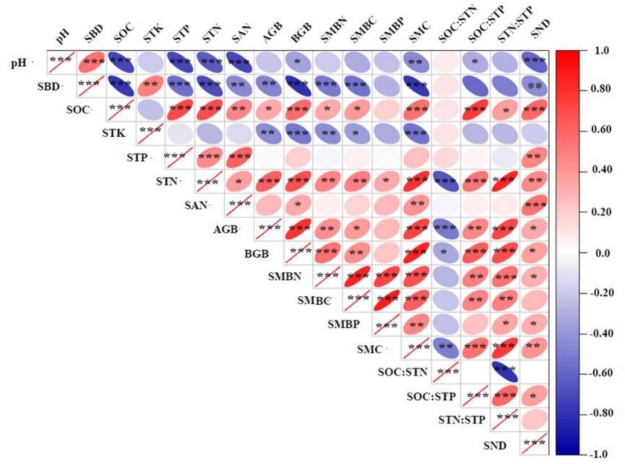Soil nematodes play a critical role in maintaining ecosystem services; however, their community dynamics in response to alpine meadow degradation remain poorly understood. This study aimed to assess how alpine meadow degradation affects soil nematode diversity and community composition, and to identify the key biotic and abiotic factors driving these changes. In this study, soil samples were collected and analyzed from three alpine meadows exhibiting different degrees of degradation on the Qinghai-Tibet Plateau. We evaluated soil nematode community composition and diversity as well as a range of soil physicochemical properties during alpine meadow degradation and identified the ecological predictors of soil nematode diversity and community composition using NMDS and SEM analyses. Our results showed that: (1) as alpine meadow degradation intensified, the relative abundance of bacterivores and fungal feeders initially decreased but then increased, whereas the relative abundance of omnivores exhibited the opposite trend, and the relative abundance of predators and plant feeders did not significantly change. (2) Soil nematode diversity significantly changed with alpine meadow degradation, and nematode diversity was greatest under light degradation. (3) During the alpine meadow degradation process, soil properties (pH, soil total nitrogen and soil available nitrogen), especially pH, were key factors affecting soil nematode diversity, and plant below-ground biomass had the strongest total positive effect on soil nematode community composition. Our study revealed that alpine meadow degradation significantly changed soil nematode diversity and community composition and that light degradation increased soil nematode diversity and may enhance soil ecosystem functions. Our study improves understanding of the soil nematode diversity and community composition of degradation and provides useful guidance for alpine meadow restoration.

Fig. 6. Relationships between the diversity of soil nematodes and environmental factors.
The link below will guide you to the reading:
https://www.sciencedirect.com/science/article/pii/S1470160X25010386
